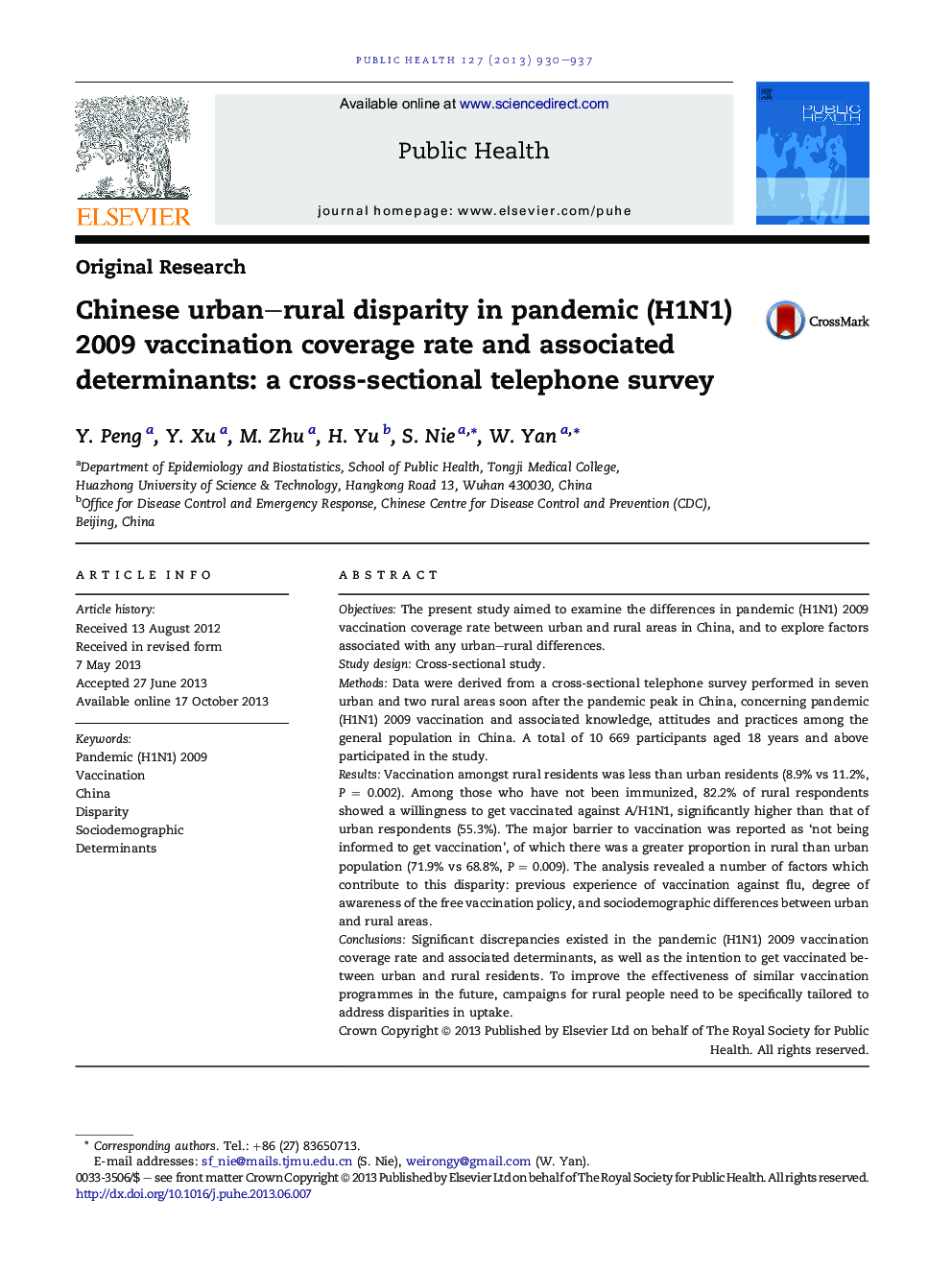| Article ID | Journal | Published Year | Pages | File Type |
|---|---|---|---|---|
| 1087593 | Public Health | 2013 | 8 Pages |
ObjectivesThe present study aimed to examine the differences in pandemic (H1N1) 2009 vaccination coverage rate between urban and rural areas in China, and to explore factors associated with any urban–rural differences.Study designCross-sectional study.MethodsData were derived from a cross-sectional telephone survey performed in seven urban and two rural areas soon after the pandemic peak in China, concerning pandemic (H1N1) 2009 vaccination and associated knowledge, attitudes and practices among the general population in China. A total of 10 669 participants aged 18 years and above participated in the study.ResultsVaccination amongst rural residents was less than urban residents (8.9% vs 11.2%, P = 0.002). Among those who have not been immunized, 82.2% of rural respondents showed a willingness to get vaccinated against A/H1N1, significantly higher than that of urban respondents (55.3%). The major barrier to vaccination was reported as ‘not being informed to get vaccination’, of which there was a greater proportion in rural than urban population (71.9% vs 68.8%, P = 0.009). The analysis revealed a number of factors which contribute to this disparity: previous experience of vaccination against flu, degree of awareness of the free vaccination policy, and sociodemographic differences between urban and rural areas.ConclusionsSignificant discrepancies existed in the pandemic (H1N1) 2009 vaccination coverage rate and associated determinants, as well as the intention to get vaccinated between urban and rural residents. To improve the effectiveness of similar vaccination programmes in the future, campaigns for rural people need to be specifically tailored to address disparities in uptake.
